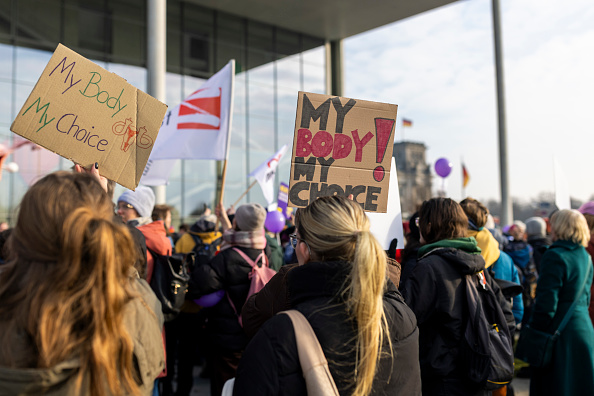The number of abortions in Germany rose slightly in 2024, reaching the highest level recorded in a decade. According to data from the Federal Statistical Office, 106,455 terminations were reported last year — a 0.2 percent increase compared to 2023.
While the annual change appears modest, the broader picture marks a reversal of the long-term downward trend that had defined much of the last two decades.
In the early 2000s, abortion numbers in Germany regularly exceeded 130,000 per year, peaking at nearly 135,000 in 2001. Over time, those figures steadily declined, hitting a low point of just under 95,000 in 2021.
Since then, however, the numbers have been climbing. In 2022, there were nearly 104,000 abortions; in 2023, over 106,000. The latest figures for 2024 now mark the third consecutive year of growth.
One of the most notable developments in the current data is the shift in the age distribution of women seeking abortions. While the majority of procedures — around 69 percent — still involved women between the ages of 18 and 34, the sharpest increases have occurred among women aged 30 and older. Compared to 2014, abortions among women aged 35-39 have risen by more than 30 percent, and among those aged 40-44, by over 23 percent. At the same time, the number of abortions among younger women has decreased, with particularly significant drops seen in the 15-24 age range.
The Federal Statistical Office attributes this shift in part to demographic changes. Over the past decade, the population of younger women has declined, while the number of women in their 30s and early 40s has grown. This changing age structure is reflected in the abortion statistics, which show rising rates among older age groups.
In terms of procedure, the vast majority of abortions — around 96 percent — were carried out in accordance with Germany’s counseling regulation, which allows terminations following a mandatory consultation. Only four percent of abortions were performed for medical reasons, as a result of sexual violence, or incest. Most procedures occurred early in pregnancy, with 8 out of 10 abortions taking place within the first eight weeks, and only around 3 percent happened after the 12th week.
Two methods dominate abortion procedures in Germany. Nearly half of all abortions in 2024 were conducted using vacuum aspiration, a standard outpatient surgical method. In 41 percent of cases, women were administered Mifegyne, a hormone-based abortion pill. Both methods are primarily performed in medical practices and surgical centers (85 percent), though some are also carried out in hospitals (13 percent).
Regionally, the most abortions were reported in North Rhine-Westphalia, which accounted for more than 23,800 cases. Bavaria followed with over 12,200, then Baden-Württemberg with about 11,000, and Berlin with just over 10,000. These four states together represented well over half of all abortions performed nationwide.
The data also offers a glimpse into the social background of those seeking abortions. Around 43 percent of the women who terminated a pregnancy last year had not previously given birth. Almost 60 percent were single, while 38 percent were married at the time of the procedure.
Abortion in Germany is technically illegal but is not punishable under certain conditions, namely provided it is performed within the first 12 weeks of pregnancy following mandatory counselling, or after 12 weeks if the pregnancy poses a serious risk to the woman’s health or is the result of rape.
The procedure must also be carried out by a licensed doctor.






